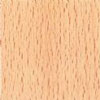Beech

| Wood type | Hardwood |
| Environmental | Not listed in CITES. Believed available from well-managed sources. Check certification status with suppliers. |
| Distribution | Europe, especially central Europe and Britain. |
| The Tree | Beech has been called the mother of the forest, since without it in mixed broad-leaved forests, other hardwood timber trees would have greater difficulties for survival. The rain drip from beech destroys many soil-exhausting weeds, its shade prevents over-evaporation of moisture from the soil, and its heavy crop of leaves provides humus to the soil. In close forest, it can reach a height of 45m with a clear bole of 1 5m but on average this is usually about 9m with a diameter averaging 1.2m occasionally more. |
| The Timber | Normally, there is no clear distinction by colour between sapwood and heartwood, the wood being very pale brown when freshly cut, turning reddish-brown on exposure, and deep reddish-brown under the influence of steaming treatment commonly applied in parts of the Continent before shipment. Some logs show an irregular, dark reddish-coloured kern or heart, caused it is believed, by the effect of severe frosts, and occurring more frequently in Continental beech. The wood is typically straight grained, with a fine, even texture, but varying in density and hardness according to the locality of growth.Thus beech from central Europe, notably that from Yugoslavia (Slavonian), and that from Romania is milder and lighter in weight, about 672 kg/m3, than beech from Britain, Denmark and northern Europe, which weighs about 720 kg/m3 when dried. |
| Working Qualities | Good – Good |
| Durability | Not durable |
| Treatability | Easy* |
| Moisture Movement | Large |
| Density (mean, Kg/m³) |
720 |
| Texture | Fine |
| Availability | Regular |
| Price | Low to medium |
| Excellent bending properties | |
| Use(s) | Interior joinery, Furniture, Plywood, Flooring |
| Colour(s) | Pink/pale red, Reddish brown (after steaming), White/cream |
